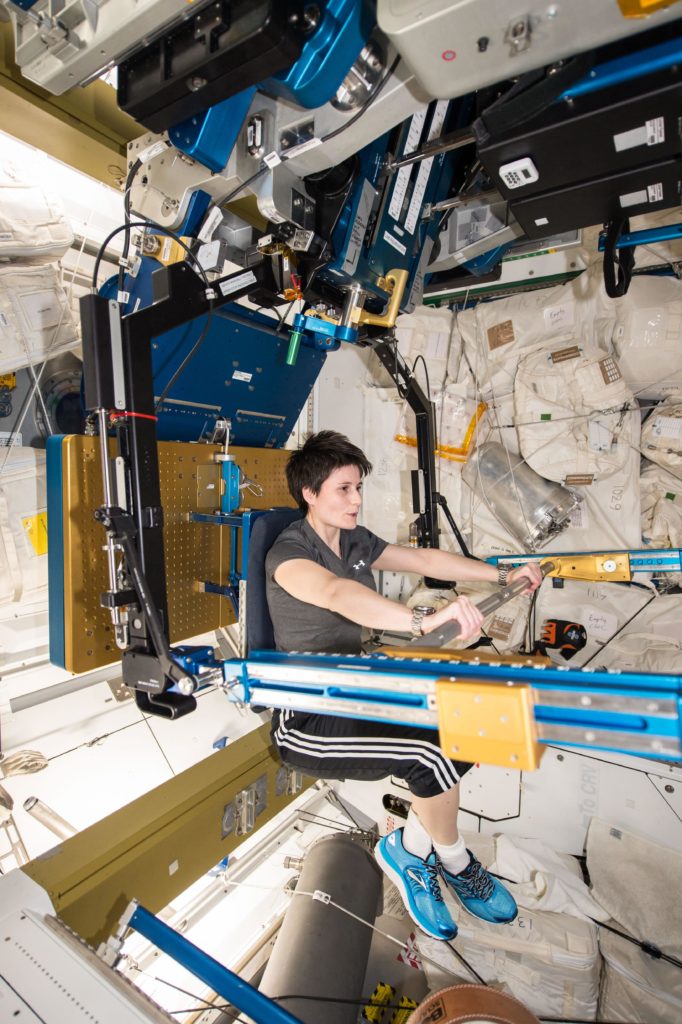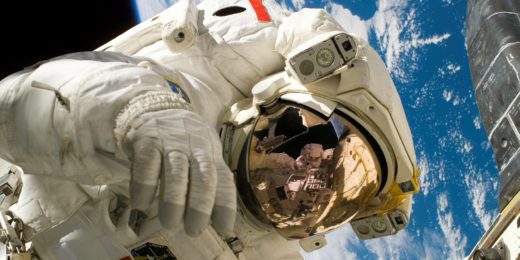Osteoporosis is probably not the first thing to come to mind when contemplating a mission to Mars, but it turns out it could be an important issue. According to a new estimate, half of astronauts could develop the ailment by the time they come back from the red planet, and that could put more than just their bones at risk.
"If you have a fracture on the surface of Mars, it will take at least a year to get back to Earth," said Eneko Axpe, PhD, a postdoctoral fellow in materials science and engineering and the first author of the new study, which appears in PLOS One. "It puts the astronauts' lives and the mission at risk."
For Axpe and his advisor, Eric Appel, PhD, an assistant professor of materials science and engineering, the idea to come up with bone-loss estimates for Martian travelers emerged from a broader interest in understanding the mechanical properties of human tissues such as bone.
That interest led to a collaboration with NASA scientists who were trying to figure out what to do about a curious side effect of space travel: Because everything in space is weightless, there is no stress on astronaut's bones, and without that stress the body's bone-maintenance systems shut down. The result is that astronauts lose bone density in space much faster than they would on Earth, but how much faster and whether it could put astronauts at risk for a mission to Mars remained unclear.
To address that problem, Axpe first turned to studies of people who haven't used their legs for long periods, such as people with spinal cord injuries and those in comas. Those studies suggest that after an initial period of relatively rapid bone loss, the decline would slow down and eventually plateau -- what's called an exponential decay.
Axpe and colleagues then gathered data on 69 astronauts who had spent as many as 228 days in space and combined that data with the exponential decay model to come up with bone-loss estimates over time for astronauts headed to Mars.
The results are not promising. According to optimistic estimates, it would take 400 to 600 days to get to Mars and come back to Earth, after which astronauts would lose between 15 and 22% of their bone mineral density, according to Axpe, Appel and colleagues' estimates.

At that rate, about two-thirds of Martian astronauts would develop osteopenia, a precursor to osteoporosis. For a more realistic travel time of around three years, astronauts would lose a third of their bone mineral density, nearly all would develop osteopenia and a third would be at risk for osteoporosis. By the time those travelers returned to Earth, half could develop osteoporosis.
Bleak though that may seem, there is some reason for hope.
After they recognized bone loss was an issue for astronauts who spend more than a month or so in space, NASA designed exercise programs aimed at putting some stress on bones and thus maintaining their strength. It's anticipated, Axpe said, that those routines could significantly improve astronauts' bone health, although researchers won't know for sure as there has not been such a long mission yet like the one to Mars.
"A lot of people focus on the technological challenges of getting to Mars, or the psychological challenges of being in a spacecraft for 1,000 days, but not necessarily the fact that your bones decay," Appel said. "Can people even make it, or will they be jello by the time they get there?"
Now, he said, researchers at least have a way to answer that question.
Top photo courtesy of NASA/JPL-Caltech, center photo by NASA






